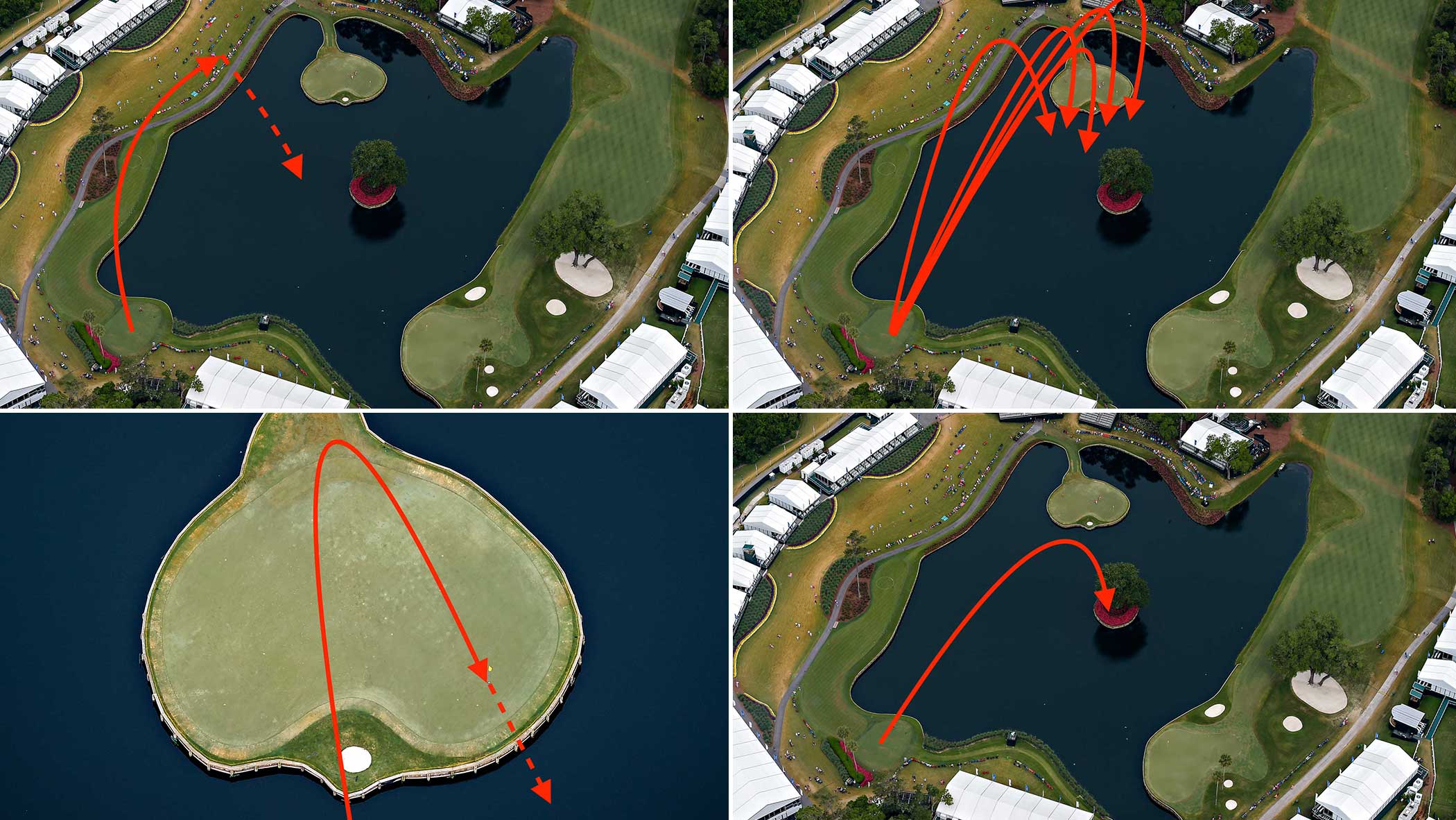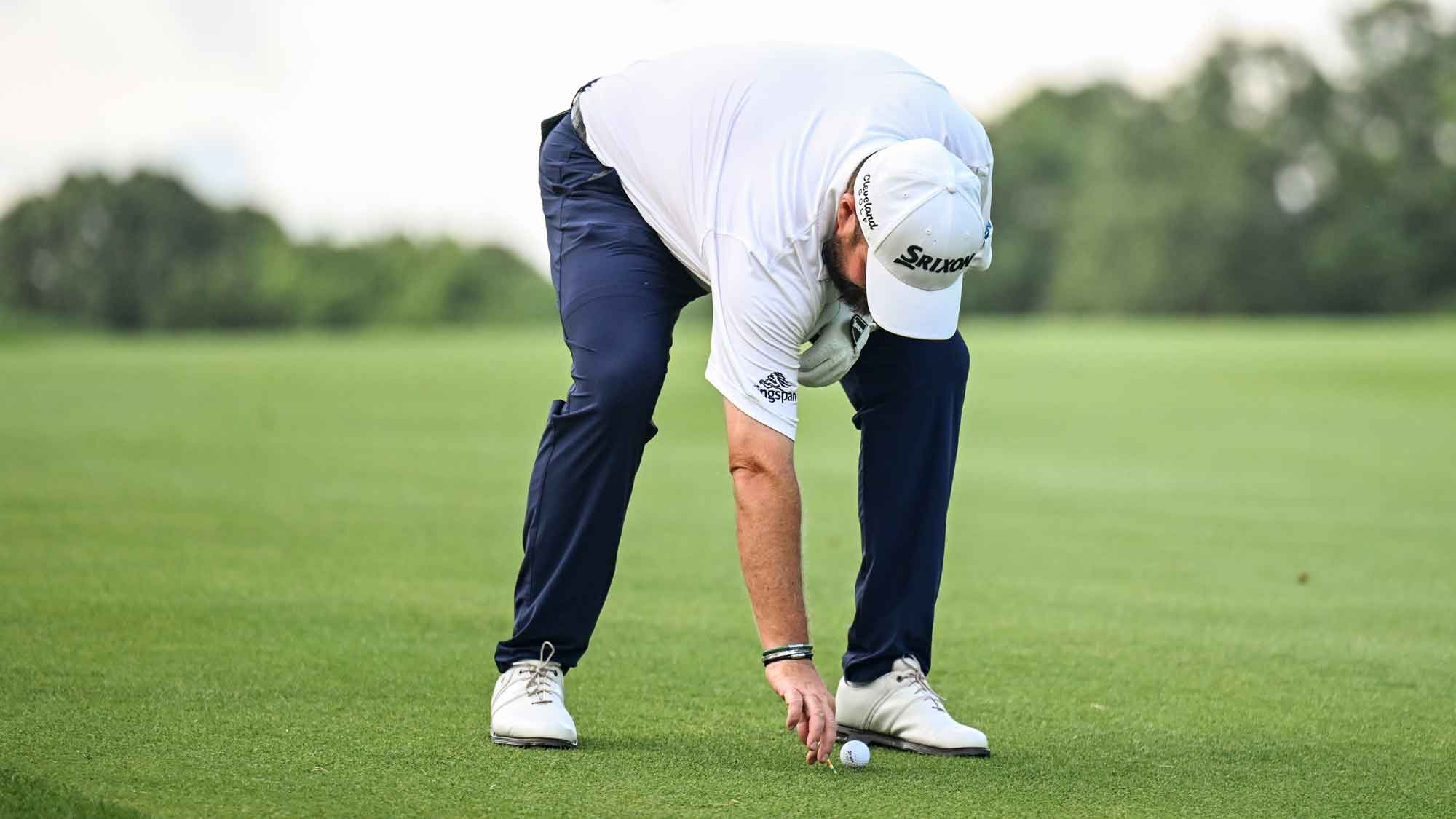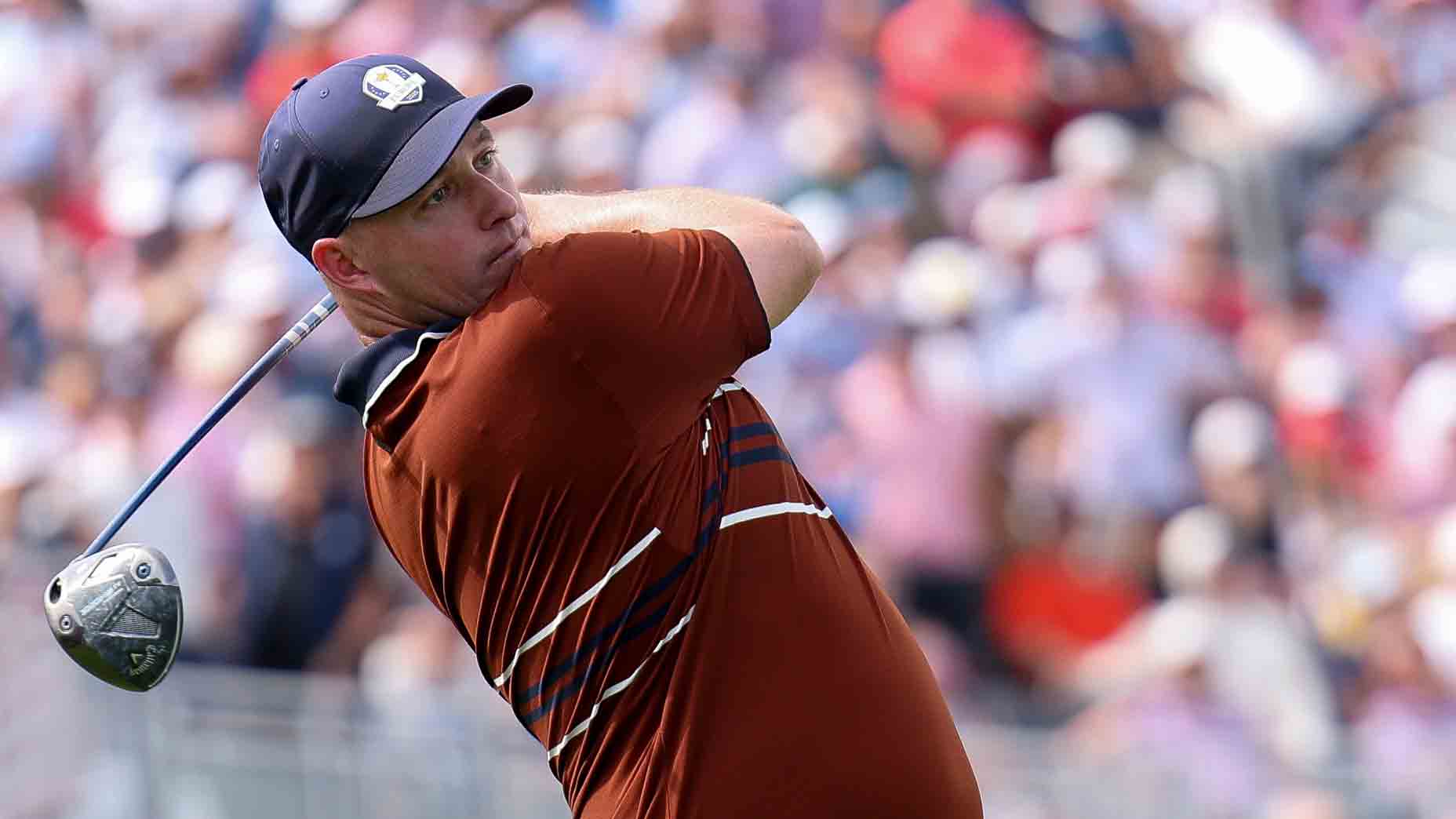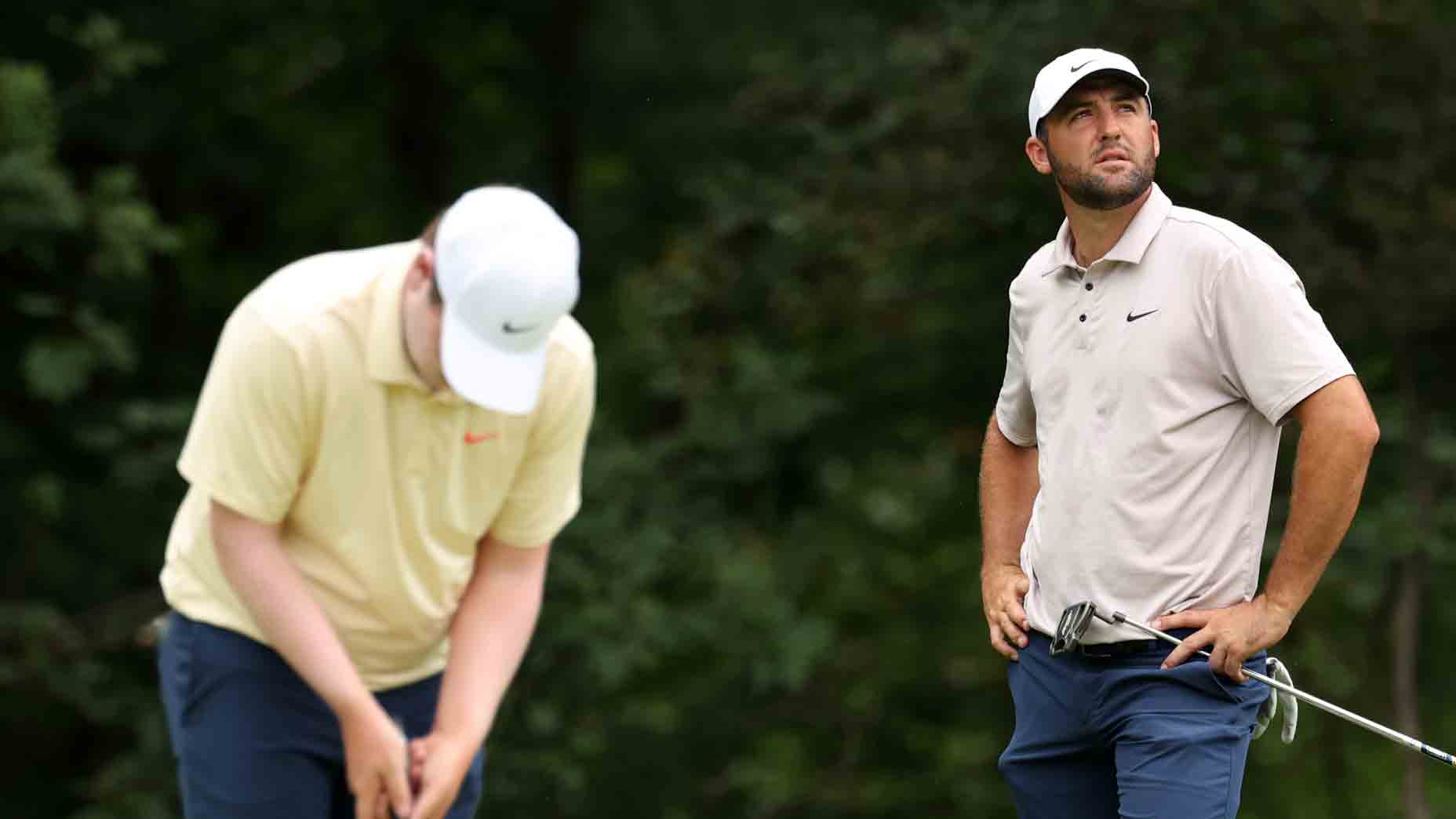“Every course needs a hole that puckers your rear end,” Johnny Miller once said, referring to the par-3 17th at TPC Sawgrass.
He was right. That island green will do that to your derriére. It will also make your heart race, your stomach churn and your mind reel with thoughts of potential outcomes. After all, almost anything could happen.
You could make an ace, as Sergio Garcia did in 2017. You could also make a nonuple-bogey 12, a fate that befell Bob Tway in 2005. You could even hit a shot that bounces off the railroad ties rimming the green and lands on the back of a gator in the lake.
Unlikely, sure. But not impossible. And then what would you do?
Because there’s no such thing as being too prepared, we pondered a range of wild scenarios that could — theoretically, at least — unfold on the 17th hole at this week’s Players Championship.
Here’s a look at 12 of those hypotheticals, along with an explanation of the rules that would apply, as confirmed by a USGA rules expert.
Scenario No. 1: A player’s tee shot hits the flagstick and caroms back into the water. Aside from groans from the crowd, what happens next?

Ruling: Great shot! Terrible result. The consequence is a one-shot penalty, stroke and distance, meaning that the player’s next shot would be his third shot. He’d have to play it either from the drop zone, or from the teeing area, along the line of relief. Good news is, he can still make a miracle par.
Scenario No 2: A player dunks his tee shot in the drink. Then another. And another. And another. To the point where he runs out of balls. What’s the deal? Automatic DQ?
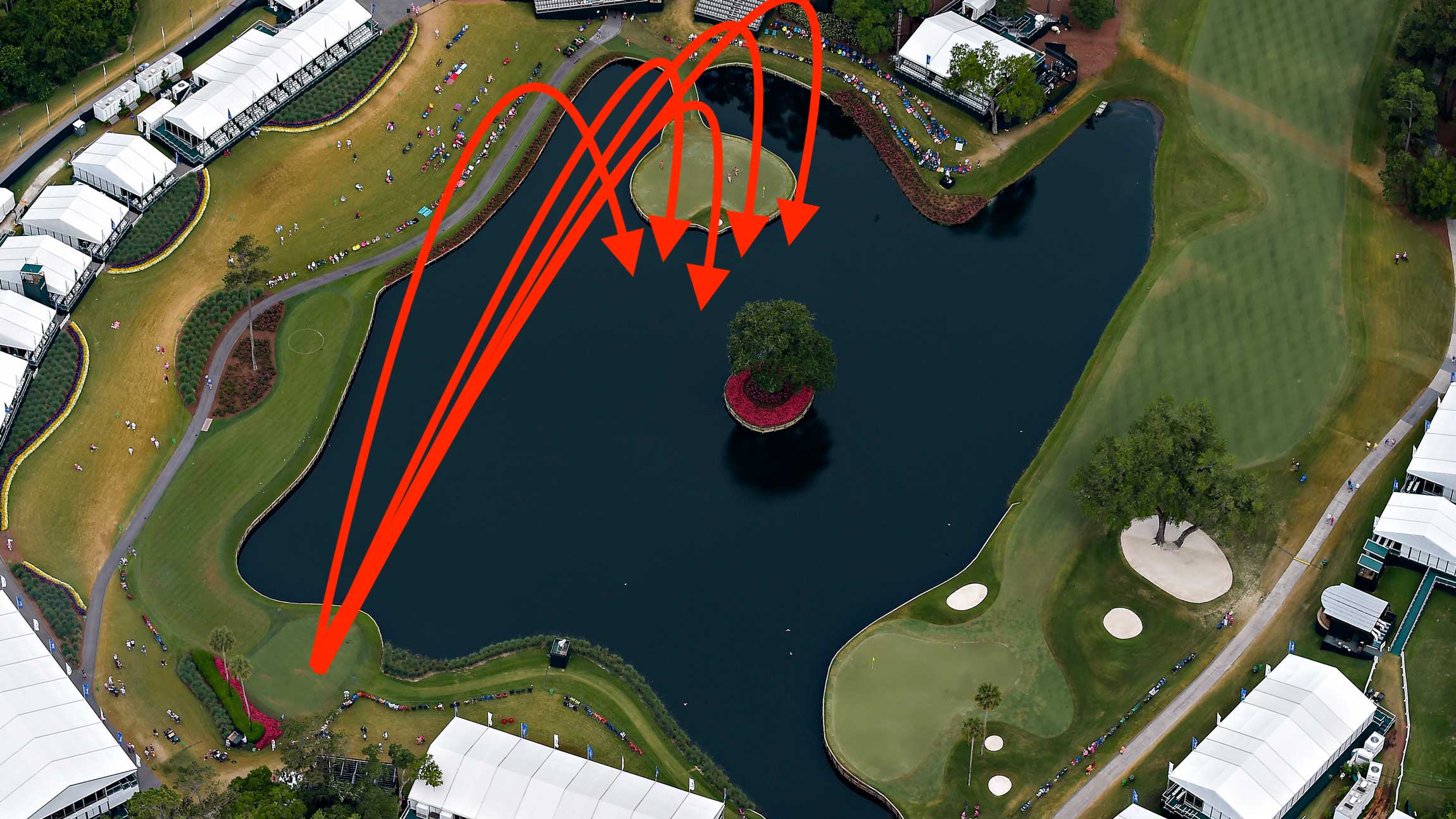
Ruling: Not automatic. That player could borrow a ball from anyone. A competitor. A competitor’s caddie. A spectator in the crowd. There is no restriction on this. Here’s the catch. The One-Ball Local Rule requires that it be the exact same type of ball the player was using — not just a Titleist, say, but the same model of Titleist. If the player were unable to acquire such a ball quickly, he could use another conforming ball for the 17th hole. But that would come with a two-stroke penalty. What’s more, the original kind of ball would have to be used on the 18th hole (quick, someone, run back to the pro shop!), otherwise the player would indeed be DQ’d.
Scenario No. 3: From the greenside bunker, a player skulls one over the green and into the drink. Does he have to play again from the sand?

Ruling: He doesn’t have to, but he’ll might very well want to. His other options are to either play from the drop zone, or to take back-on-the-line relief, which would mean going around to the other side, beyond where the ball went in, and playing back over the water. That makes the bunker seem pretty appealing, right? In that case, the player would be required to drop his ball in the bunker within one-club-length from where he last played. He’d be allowed to smooth the sand before he dropped.
Scenario No. 4: A player blades his shot from the greenside bunker. The ball ricochets off the bunker face and back into the water. The lucky player gets his pick of the largest stuffed animal in the pro shop, right?

Ruling: No stuffed animal. Just a one-stroke penalty, and a drop under the same guidelines as Scenario 3, except that back-on-the-line relief would go behind the bunker due to where the last ball entered the drink.
Scenario No. 5: From the greenside bunker, a player blades one off the bunker face and the ball comes back and hits him. Aside from everyone’s pity, what does the player receive?

Ruling: Oh, happy day! Under revised Rule 11.1, there is no penalty for this. The player simply takes his next shot from wherever the ball lies.
Scenario No. 6: A player’s tee shot settles atop the railroad ties that ring the green. Free relief?

Ruling: Nope. The ball is in the penalty area and the railroad ties are an integral object. Either play it as it lies, or take penalty-area relief, with a one-shot penalty.
Scenario No. 7: While addressing a shot from the edge of the green, a player stumbles and falls into the water. Not surprisingly, it takes a bit of time for him to get dried off and ready to hit again. Is there a slow-play warning or a penalty?

Ruling: Under Rule 5.6a, a penalty for “unreasonable” delay of play could be imposed. But rules committees (in this case, the PGA Tour) are made up of reasonable people, and the decision would rest with them. In other words, it’s unlikely the player would be penalized. But it’s pretty certain that we’d all get a good laugh.
Scenario No. 8: Unbeknownst to many fans, there is another little island in the lake at 17, well to the right of the island green and — unlike the green itself — not connected by a foot bridge to the rest of the course. What happens if a player cold shanks a tee shot and his ball winds on that lonely little patch?
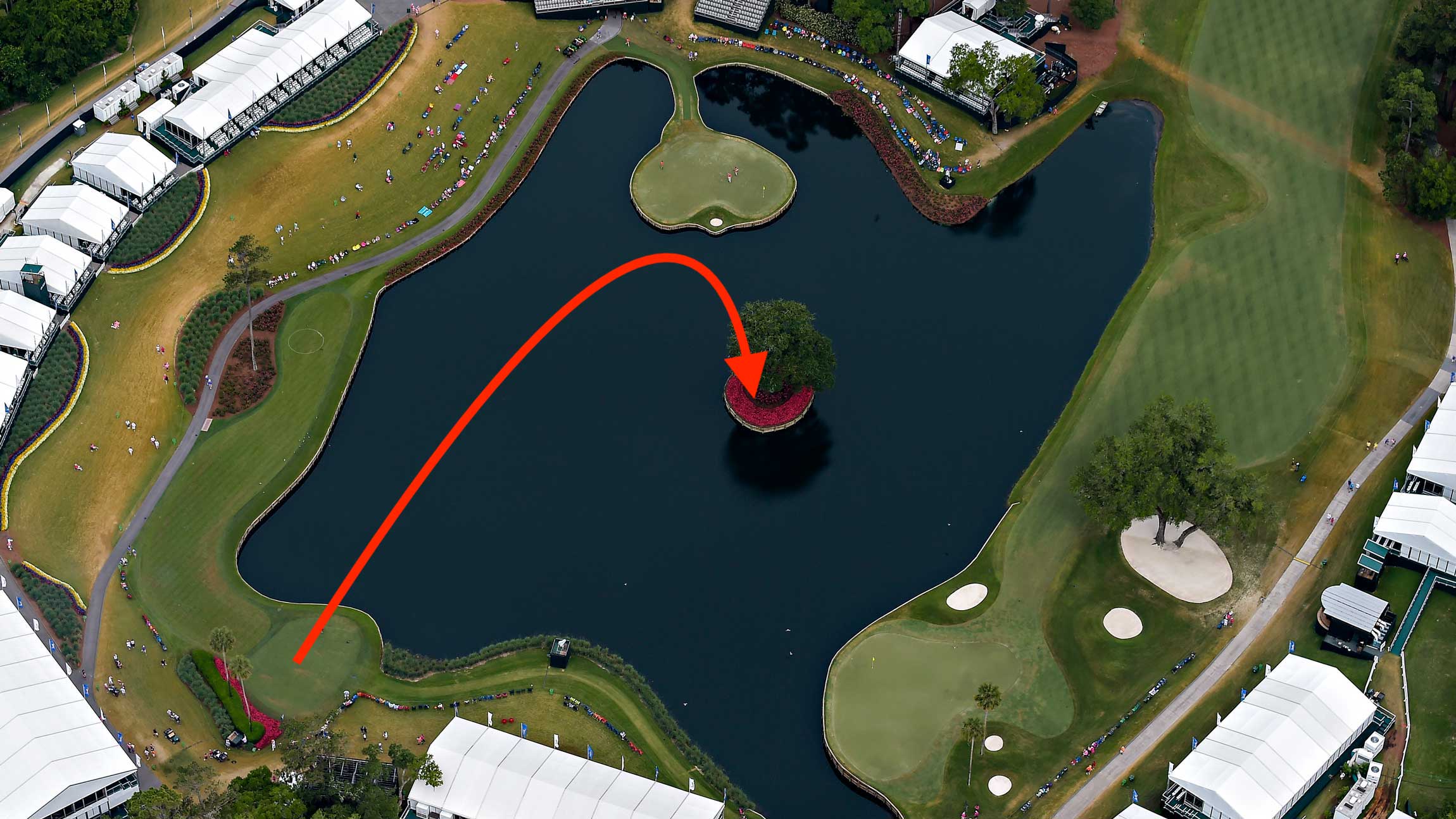
Ruling: That island is in the penalty area, so the options would be to either play it as it lies (getting to the ball would present obvious problems), or take penalty area relief as detailed above.
Scenario No. 9: While marking his ball on the green, a player drops the ball. It caroms off his foot and into the water. Penalty?

Ruling: Here’s another case where 2019 updates to the Rules have made the Rules more lenient. Because it was accidental, and because the original ball cannot be recovered quickly with reasonable effort, the player could simply replace that ball and proceed without penalty.
Scenario No. 10: A player’s tee shot caroms off the railroad ties and the ball lands on the back of an alligator that is minding its own business in the lake. The player didn’t yell fore. Should the alligator be mad? Also, what does the player do next?

Ruling: Reptilian feelings are not addressed in the Rules of Golf. But the rest of this situation is. Exception 1 to Rule 11.1b would apply. That exception states that when a ball played from anywhere other than the putting green comes to rest on a person, animal or “moving outside influence,” that ball must be dropped within one club-length of where it first came to rest. Given that the ball is on a gator’s back in the middle of a lake, that’s not a very appealing option. Luckily, the player could skip it and simply take penalty area relief.
Scenario No. 11: That same alligator is now sunbathing on the green, and a player’s tee shot comes to rest alongside it. What to do?

Ruling: The player would be entitled to dangerous animal relief. That allows the player to place a ball (either the original or another ball) at the nearest spot where there is no interference from the gator. Someone could also try to shoo the gator away. If that happened, and the gator moved the ball, the player would simply replace the ball and proceed without penalty.
Scenario No. 12: A player’s tee shot hits an NBC drone and plops into the water.
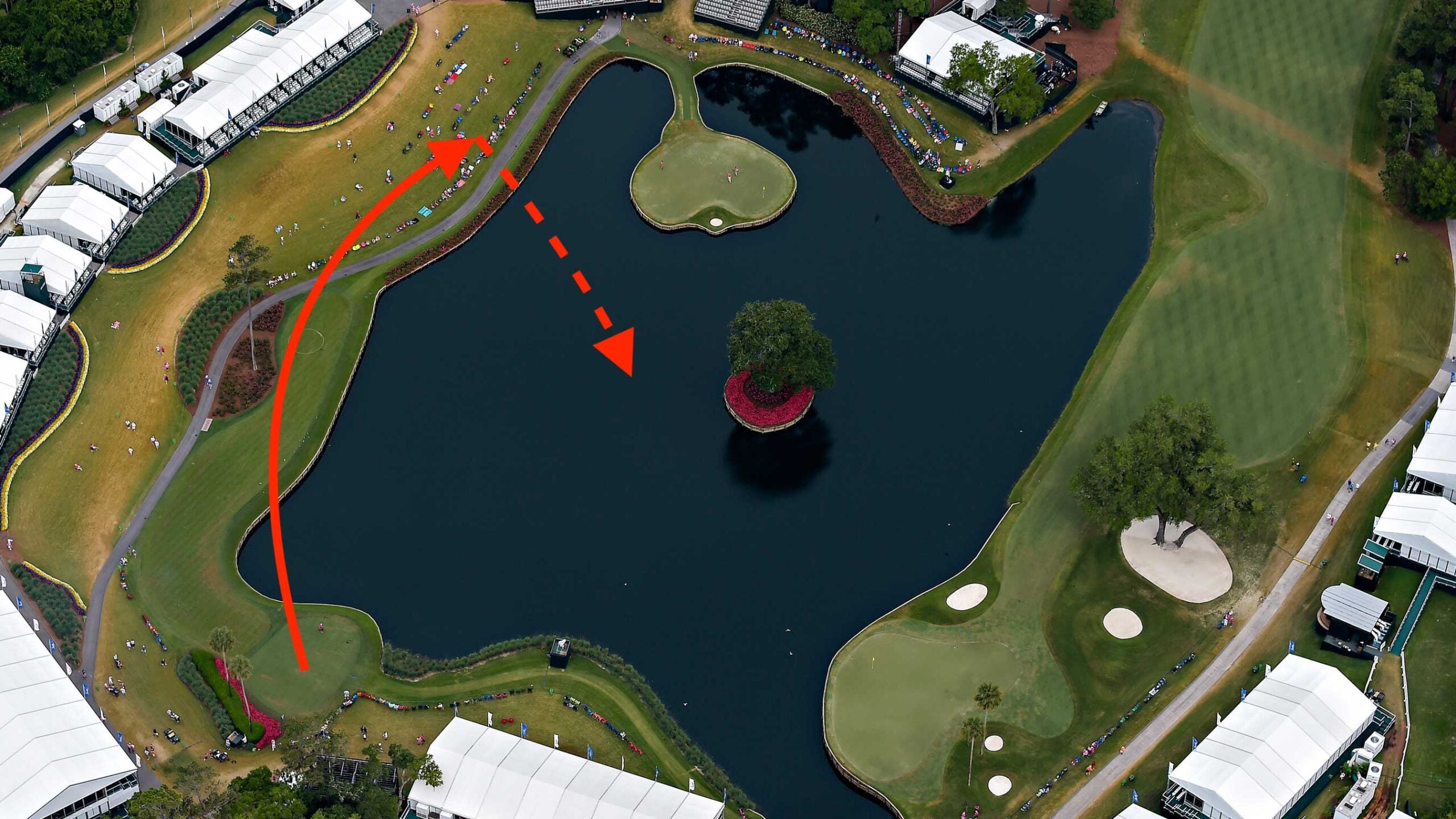
Ruling: Hitting a drone would qualify as an accidental deflection. And there is no penalty for it. The ball would be played from where it lies. Unfortunately, in this case, the ball lies in the water, so the likely consequence is a one-shot penalty, with penalty area relief. Upside: very cool footage of the tee shot in question.
